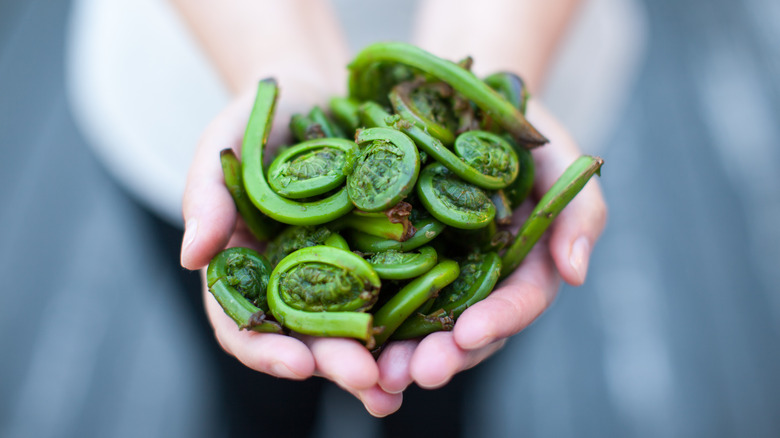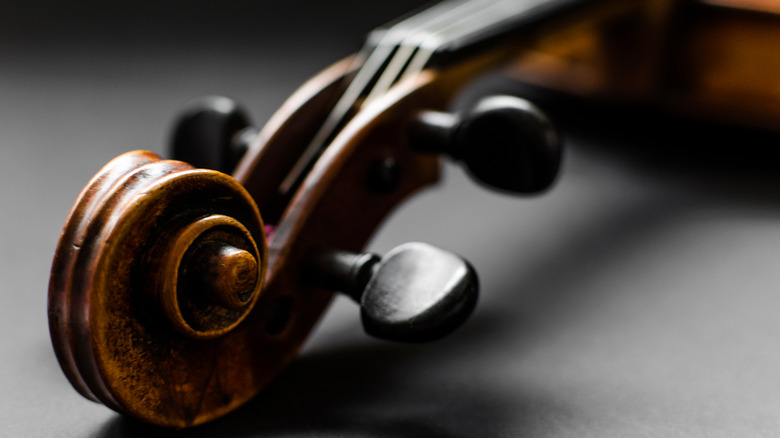How Fiddlehead Ferns Got Their Name
Imagine you're hiking in the middle of spring. The birds are singing, the sun is shining over a lush green forest, and your boots are wet with morning dew. It is the ideal way to spend your day off, and if you live in the New England area, it is also the perfect time to keep your eye out for fiddlehead ferns. They'll be there, poking their bright fronds out of the ground, and while you might find these morsels at farmer's markets, they may be right outside your back door for free!
A fern is a non-flowering, non-fruit producing plant that often looks green, but comes in all shapes and sizes (via the USDA). And what's so special about the fiddlehead fern is that it is edible and delicious. Just be cautious while harvesting, as the fiddlehead can be misidentified and you could end up eating a more toxic plant if you're not careful.
This fern is instrumental
According to the Farmers' Almanac, the fiddlehead looks like an emerald fern springing out of the ground, tightly twisted into a distinct, beautiful curl. It usually grows in the wet areas of the East Coast in patches along the forest floor, so where you find one, you'll find more. The fiddlehead tastes a bit like other hearty green vegetables — like a variation of asparagus — and can be boiled, roasted, grilled, and seasoned to your heart's desire.
The fiddlehead has been harvested by Native tribes for centuries, but once European Americans saw the plant they knew what it reminded them of. Violins and fiddles are lovely to listen to and are often hand crafted to be as beautiful as they sound, but if you look past their necks, you'll often see a curl carved into the top of the instruments. This crafter's flare is what the fiddlehead fern is named after (via The University of Maine). It is funny how man-made objects often mirror pre-existing things in the natural world.

